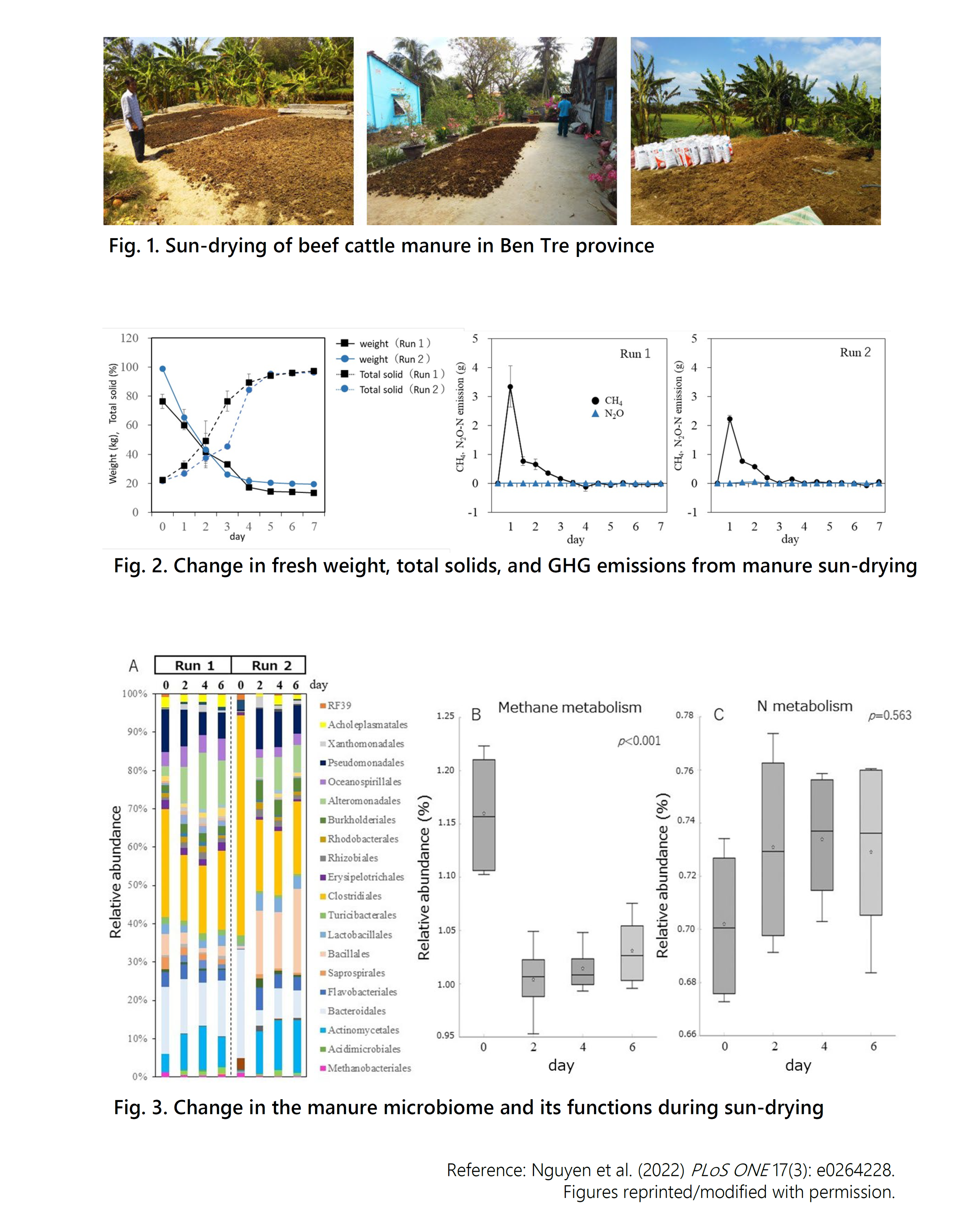Greenhouse gas emission factor value from Vietnamese beef cattle manure sun-drying process
Description
Livestock manure and its management process are known to be a major source of greenhouse gas (GHG) emissions. Developing countries, including some SE Asian countries, sometimes do not have their own emission factor (EF) values, which forces them to use the Tier 1 approach with the default EF values provided by the IPCC to estimate their GHG inventory. Therefore, some GHG emission measurement dataset is needed to develop the independent EF values for higher Tiers estimation. Here, we conducted a farm survey in southern Vietnam to identify the major manure management system in the region. Moreover, we measured the GHG emission from the sun-drying system, estimated the EF value for this specific management, and focused on the manure microbiome to analyze its relationship with GHG emissions.
A questionnaire-based farm survey was conducted among 20 beef cattle farmers in Ben Tre province, which has a high cattle population in the Mekong Delta region, to identify the major manure management system in the region. We found that most farmers sun-dry the manure in their backyards (Fig. 1). We carried out the sun-drying experiment of beef cattle manure by mimicking the local practice and found that significant fresh weight loss occurs within 3-4 days (Fig. 2A). We measured the GHG emissions and found that CH4 emission occurs only at the beginning, while N2O emission was negligible (Figs. 2B, 2C). The potential EF values from this management category were estimated as CH4: 0.295 ± 0.078 g kg−1VS and N2O: 0.132 ± 0.136 g N2O-N kg−1 Ninitial, respectively. We estimated the function of the microbiome and elucidated that sun-drying treatment significantly reduces the activity of methane-related metabolism at the beginning stage (p<0.001), which is reflected by the significant reduction in the relative abundance of the methanogens (Fig. 3B), and this agrees well with the significant reduction in methane emission at the beginning of drying (Figs. 2B and 2C). On the other hand, the effect of sun-drying on N conversion activity, which includes nitrification or denitrification, was not statistically significant (p=0.563, Fig. 3C).
This information can be utilized as the EF value for the Vietnamese national GHG inventory. Sun-drying systems can be said to be very effective in manure management from the point of view of CH4 emission mitigation. Other agricultural practices that produce GHGs, such as dried manure application to coffee/pepper farmlands, should be further investigated.
Figure, table
- Program name
- Term of research
-
FY2017–2021
- Responsible researcher
-
Maeda Koki ( Crop, Livestock and Environment Division )
Nguyen Thanh Van ( Institute of Animal Sciences for Southern Vietnam )
Nguyen Thi Hong Trinh ( Institute of Animal Sciences for Southern Vietnam )
La Van Kinh ( Institute of Animal Sciences for Southern Vietnam )
Suzuki Tomoyuki ( Institute of Livestock and Grassland Science, NARO )
ORCID ID0000-0002-5313-7647KAKEN Researcher No.: 70391175Nguyen Duc Dien ( Tay Nguyen University )
- ほか
- Publication, etc.
-
Nguyen et al. (2022) PLoS ONE 17(3): e0264228.https://doi.org/10.1371/journal.pone.0264228
- Japanese PDF
-
2022_A01_ja.pdf967.5 KB
- English PDF
-
2022_A01_en.pdf742.67 KB
* Affiliation at the time of implementation of the study.

